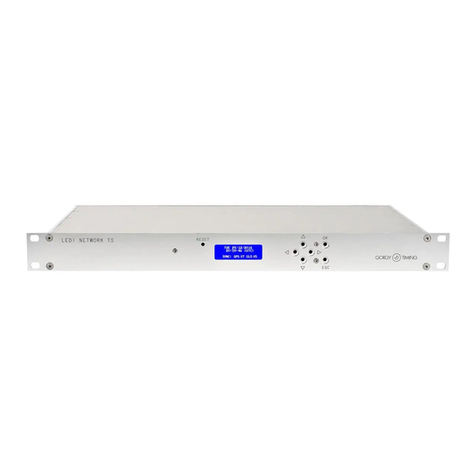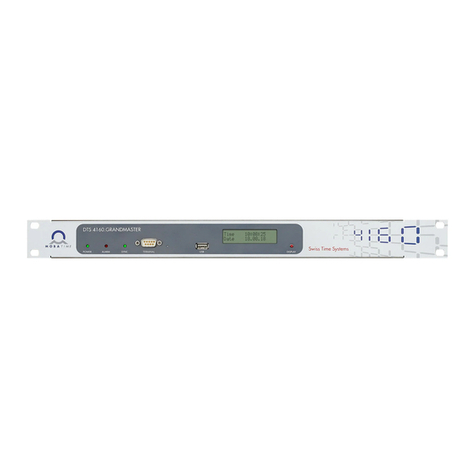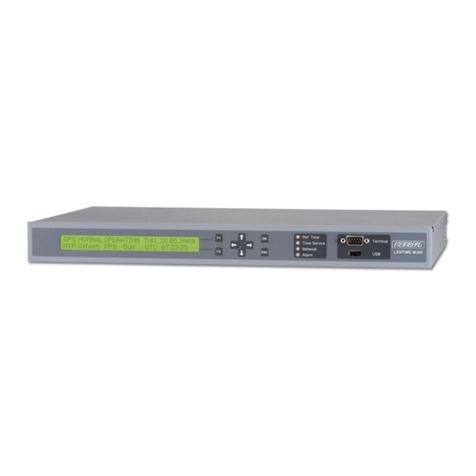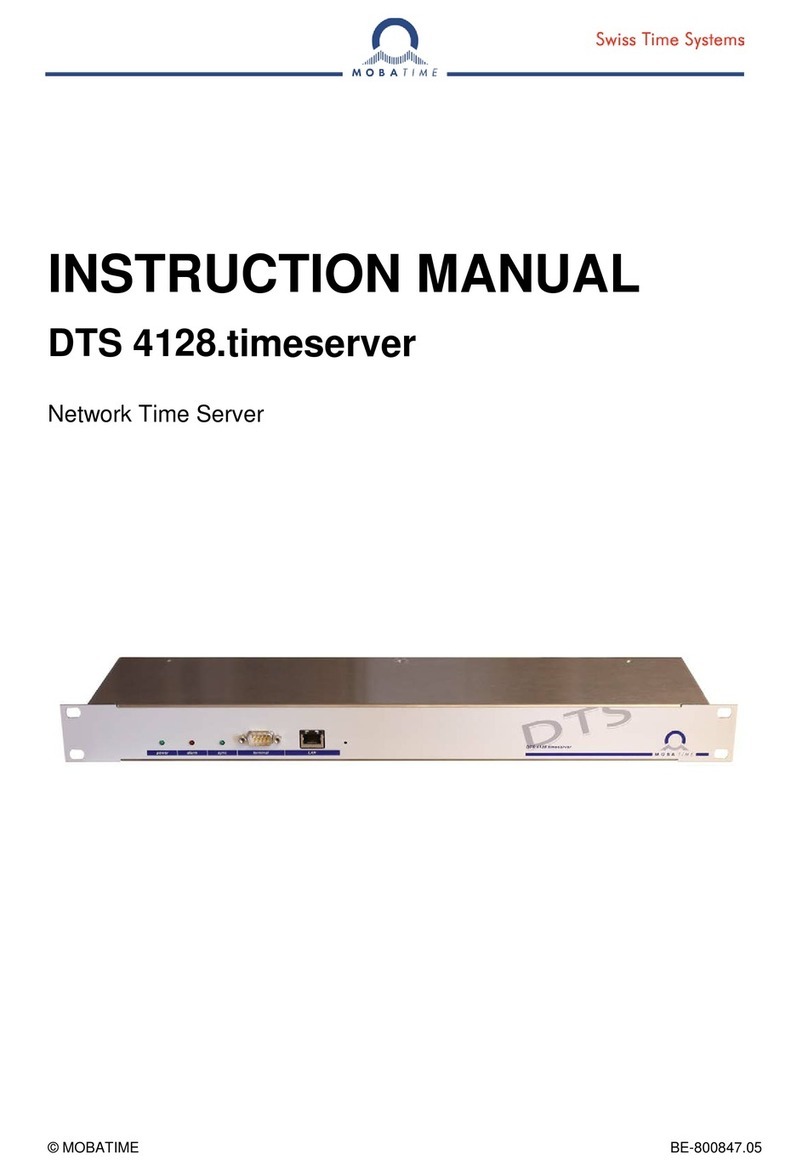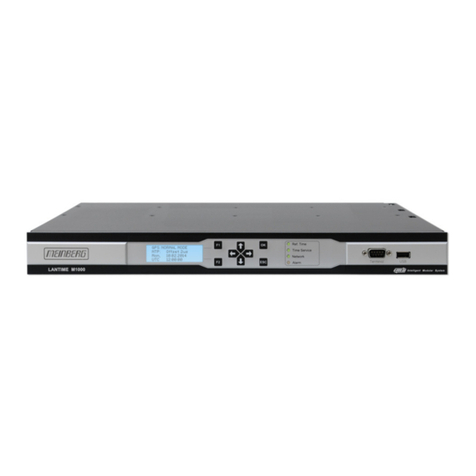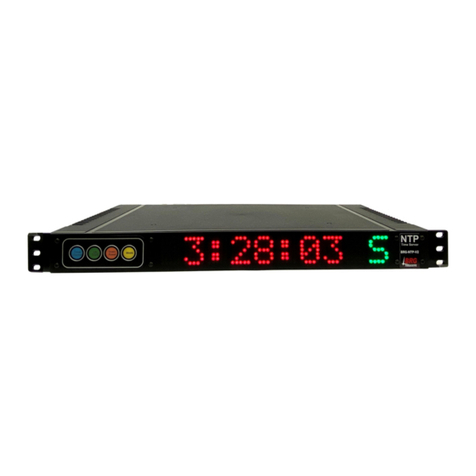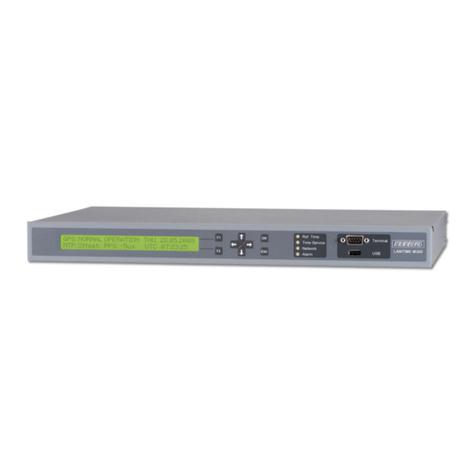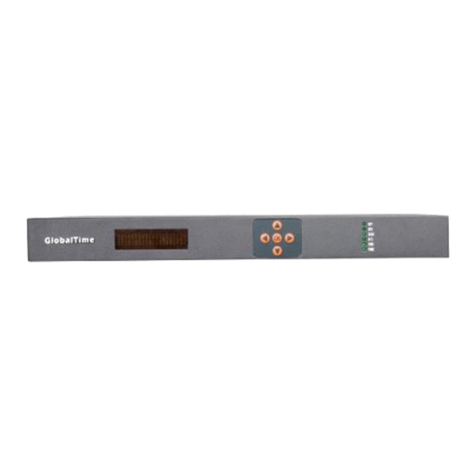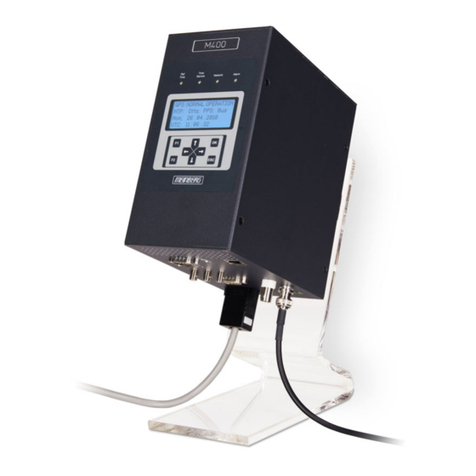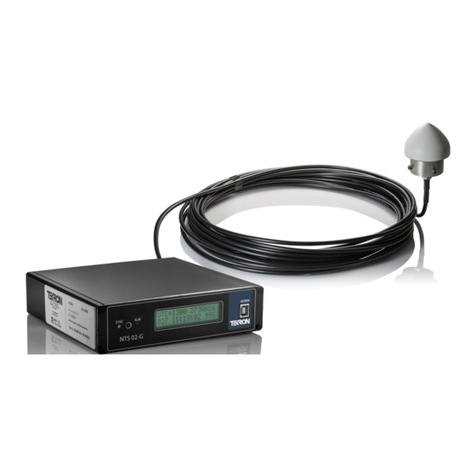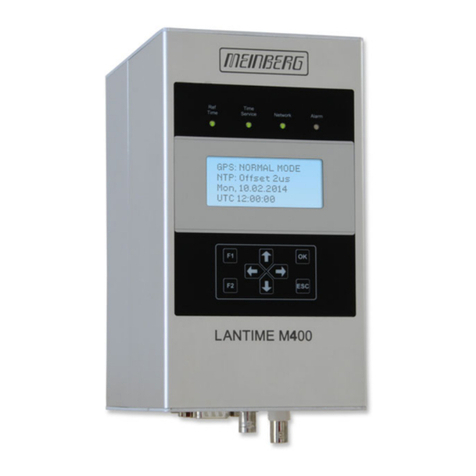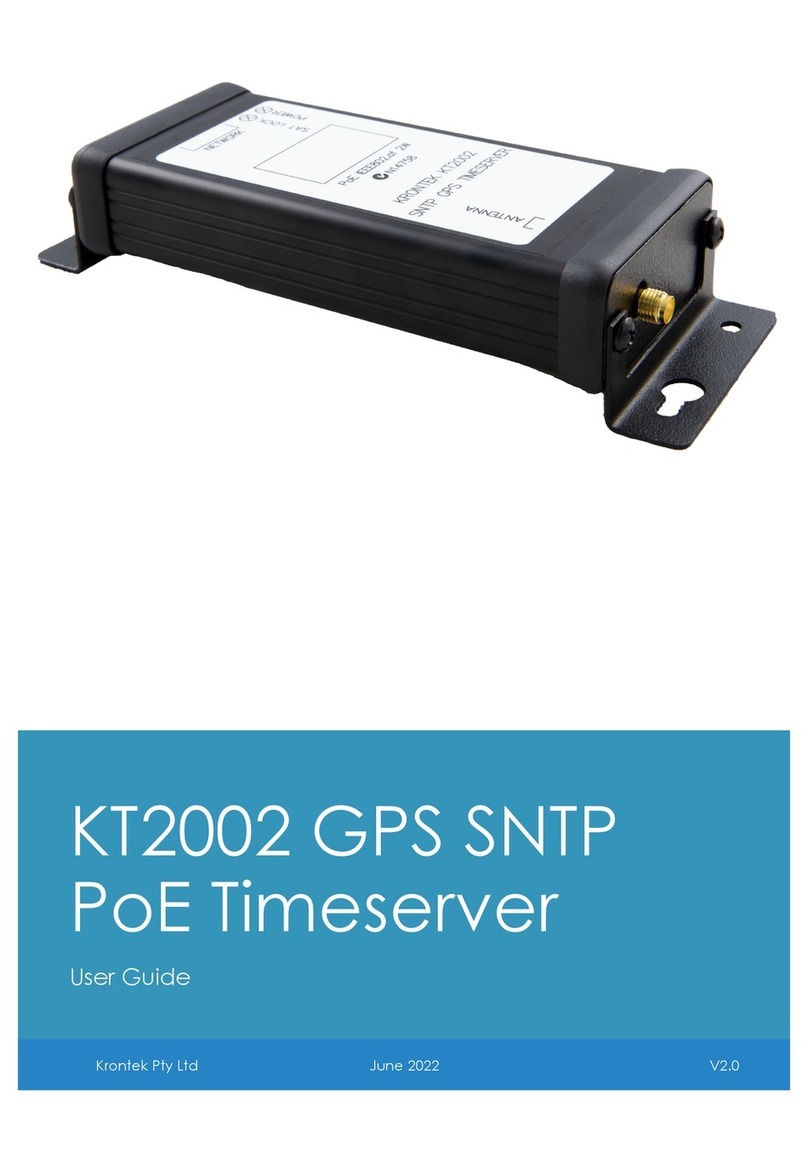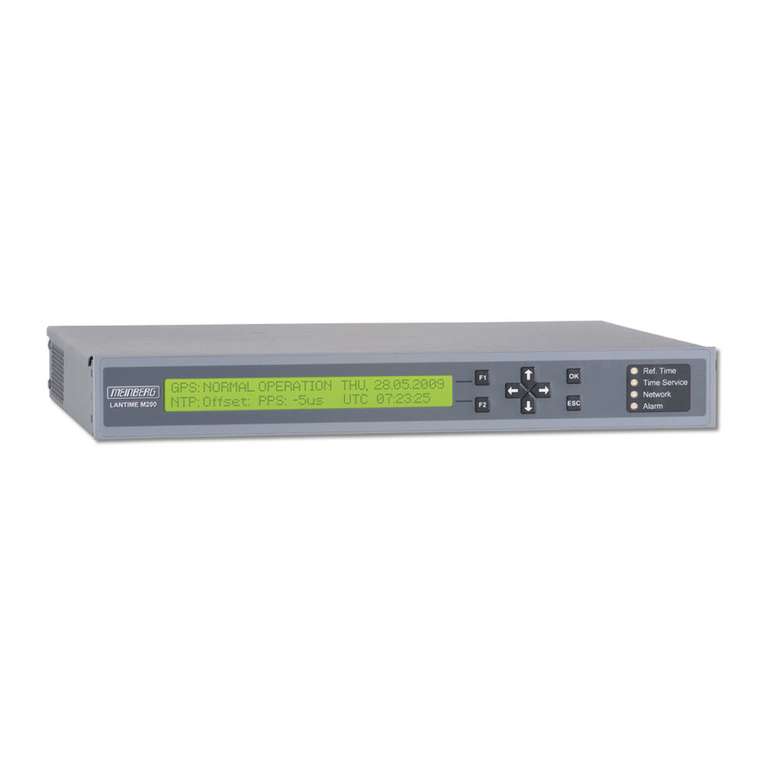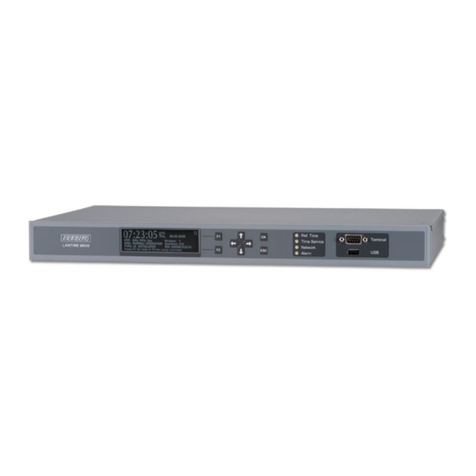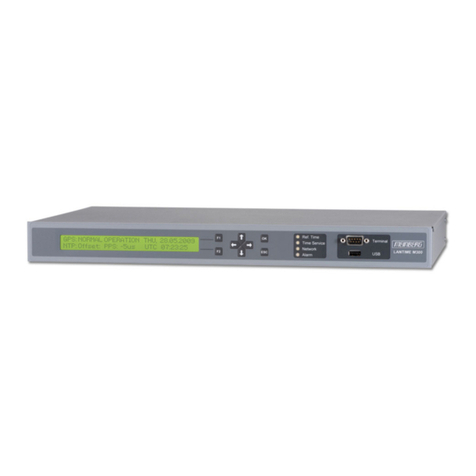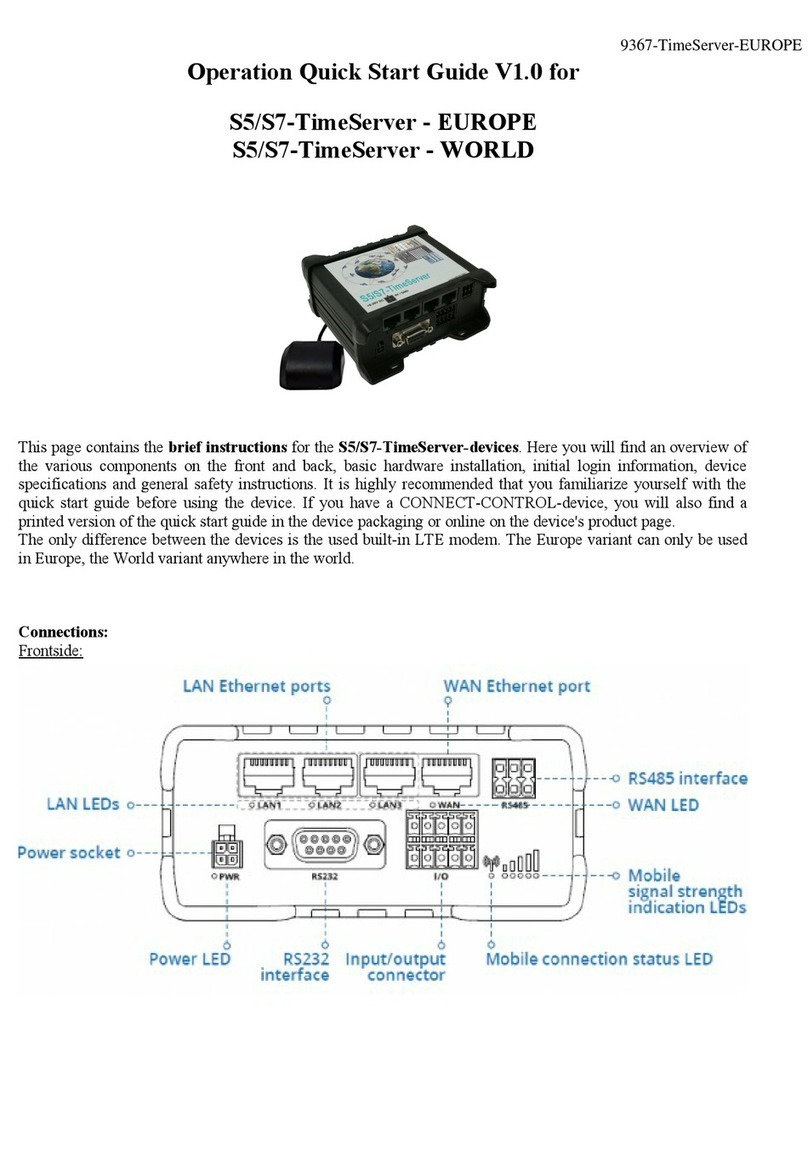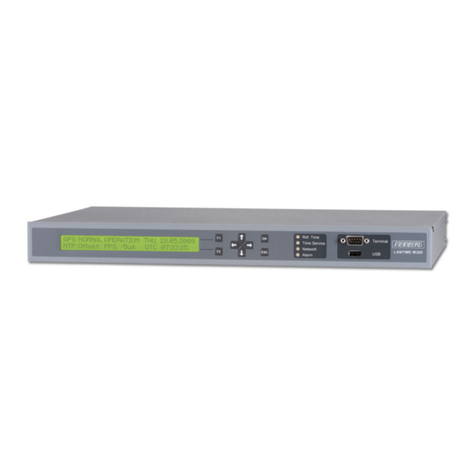6
Introduction
NTS-pico3 is next generation ultra-miniature time server. Unit has built-in antenna module
that allows it to synchronize to GNSS and package has 30 meter coax cable (SMA ended) included.
It delivers time directly to network using NTP and PTP/IEEE1588 protocols. It is equipped with
single 100/10Mbps Ethernet port working with IPv4/IPv6*. Unit is very small and has natural air
cooling. It has been designed for small industrial networks and it can operate 24/7. It is powered
in range 9-30VDC. Marine antenna has built-in GPS signal amplifier (38dB gain) and TCXO
holdover oscillator for GNSS less operations.
With hardware timestamping NTS-pico3 can achieve accuracy < 200ns. Server has multi-
satellites receiver simultaneously supporting: GPS, GLONASS. Server has very fast (less than
0.5ms +/- 1ppm) Time To First Fix TTFF synchronization start up. The GNSS receiver accuracy
is better than 15ns (at 2 sigma). Server supports cryptographic authentication for NTP. Holdover
mode ensure synchronization accuracy to be better than 4ms in first hour. After 24h the max.
holdover error is not bigger than 100ms on server output.
The NTS-pico3 GNSS receiver is designed for automatic operation without the need for user
intervention. It can however, be accessed via a serial port (RS232 or USB) for configuration and
debug purposes. Following synchronization Ethernet protocols are supported:
●NTP Network Time Protocol (rfc5905)
●SNTP Simple NTP (rfc 4330)
●PTP Precision Time Protocol IEEE1588:2008
Referential UTC is drawn from GPS & Glonass via built-in GNSS receiver, using NMEA183
frame. NTS-pico3 can also act as an 1PPS frequency reference clock. It can distribute 1PPS using
NTP or PTP IEE1588 protocol. It has also 1 SMA 1PPS output.
